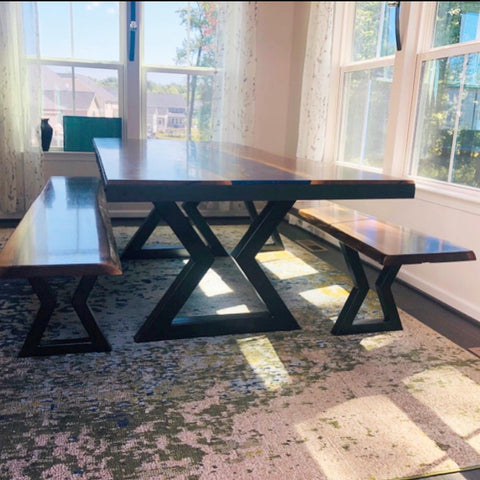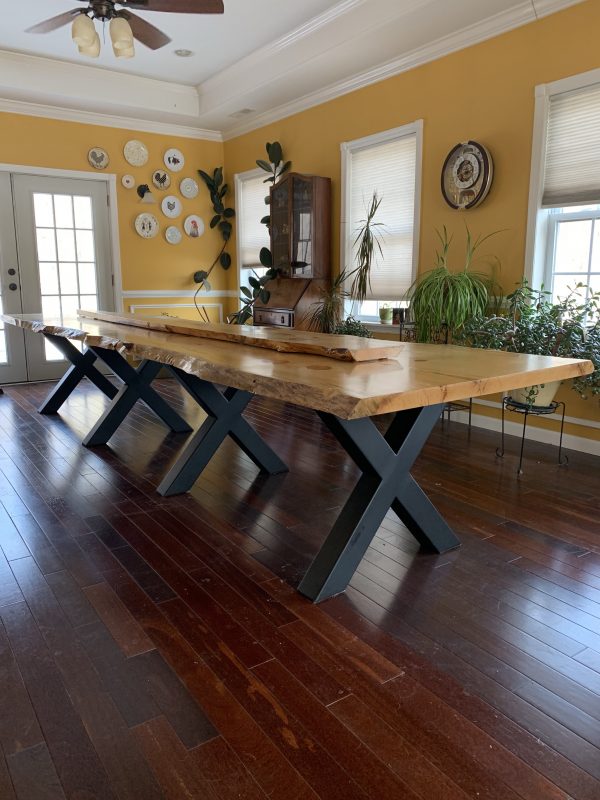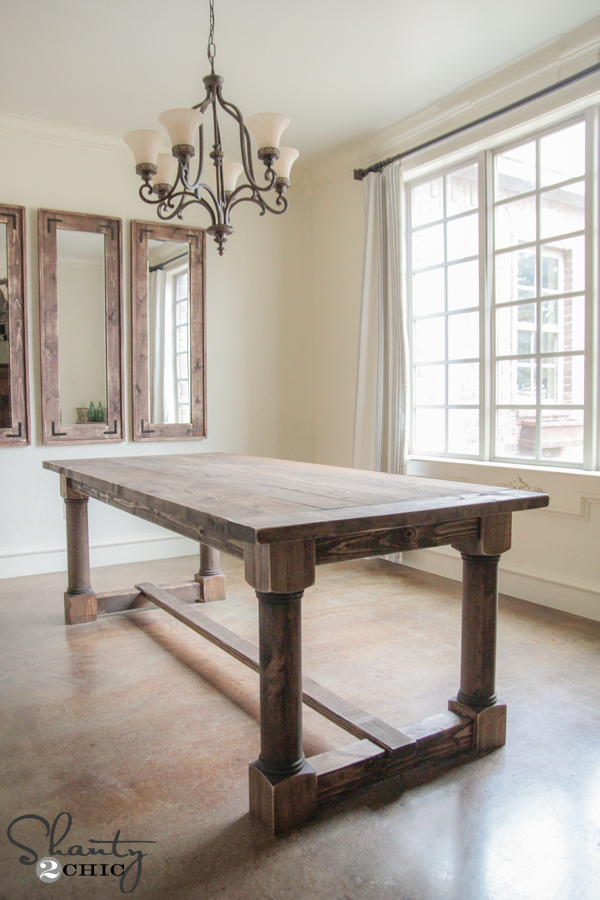How Dining Room Table Legs Can Change the Entire Aesthetic of Your Room
How Dining Room Table Legs Can Change the Entire Aesthetic of Your Room
Blog Article
Exactly How to Choose the Perfect Dining-room Table Legs for Your Home Design
Picking the excellent eating space table legs is a nuanced process that requires cautious factor to consider of different components, including your room constraints, visual choices, and practical needs. The interplay in between dimensions, materials, and styles can considerably influence the ambiance of your eating area, making it essential to approach this choice methodically.
Assess Your Eating Area
Analyzing your dining room is essential for picking the right table legs that enhance both aesthetic appeals and capability. Begin by measuring the dimensions of your eating area, including ceiling height, flooring space, and distance to various other furnishings. This details will assist identify the proper dimension and elevation of your table, which directly influences the selection of table legs.
Following, take into consideration the design and format of your dining space. An open-concept layout may profit from table legs that offer visual agility, such as slender steel or acrylic options. Conversely, a much more standard setup could call for strong wood legs that offer a sense of permanence.
Evaluate the existing shade combination and products in your eating area. Balancing the table legs with these elements creates a cohesive look that boosts the general decor. In addition, consider the performance required in your room. For instance, if you regularly organize large events, take into consideration legs that offer extra assistance and stability.
Eventually, a detailed assessment of your eating room will certainly lead you in making an informed decision, guaranteeing that your table legs not only improve the visual charm but likewise offer useful functions.
Consider Your Style Preferences
When picking dining-room table legs, it is necessary to review your personal design choices, as they dramatically affect the overall visual of your eating room. Your option of table legs can either complement or contrast with existing decor, making it essential to straighten them with your recommended indoor design theme.
If your home leans towards a modern aesthetic, consider sleek metal or minimalist wood legs that supply a clean, uncluttered look. For a much more traditional approach, ornate wood legs with intricate makings can add a touch of sophistication and class. Industrial styles gain from robust, raw products such as recovered wood and metal combinations, showing a tough beauty.
Furthermore, farmhouse and rustic designs usually favor durable, beefy legs that evoke a sense of warmth and convenience. On the other hand, if your design is diverse, you may select unusual shapes or a mix of materials to create aesthetic passion.

Evaluate Product Options
The selection of material for eating space table legs plays a critical function in both longevity and visual allure. Typical materials consist of wood, steel, and composite choices, each offering distinct features that can influence the total look and durability of your table.
Timber is a traditional choice, recognized for its heat and versatility. Woods like oak and walnut supply exceptional stamina and can be ended up in various spots to match any type of decor. Softwoods like yearn are much more vulnerable to scrapes and dents, making them less optimal for high-traffic areas.
Metal legs, typically crafted from steel or light weight aluminum, exude modernity and commercial beauty. They are immune and extremely long lasting to wear, making them suitable for family members with youngsters or regular gatherings (dining room table legs). Furthermore, steel can see page be finished in various shades, improving the personalization possibilities
Composite products, such as MDF or laminate, deal cost and varied styles. While usually less sturdy than strong timber or metal, they can still offer a stylish look and are typically easy to keep.
Eventually, the material you pick must align with your way of living, aesthetic choices, and the level of usage your dining table will certainly experience.
Determine Elevation and Dimension
Selecting the ideal elevation and dimension for your eating area table is necessary for both performance and convenience. The basic height for eating tables typically varies from 28 to 30 inches, enabling adequate legroom for a lot of people when seated. Nevertheless, it is crucial to think about the measurements of your eating area and the kinds of chairs you prepare to utilize.

Additionally, think about the percentages of your eating area. A bigger table in a spacious area can produce a grand atmosphere, while a smaller table works well in more intimate settings. Eventually, the ideal height and dimension will certainly balance with your general decoration and improve the eating experience for you and your guests.
Explore Personalization Possibilities

Furthermore, the design of the legs can be customized to fit numerous styles, such as rustic, modern, or commercial. For example, tapered legs can evoke a mid-century modern-day feeling, over at this website while chunky, block-style legs might reverberate with conventional or farmhouse decor.
House owners can also discover shade finishes, from all-natural wood spots to paint, allowing them to match or contrast with the tabletop and bordering design.
Furthermore, leg height can be gotten used to accommodate certain seating arrangements or personal choices, enhancing both convenience and functionality.
Finally, distinct decorations, such as makings or ornamental braces, can further customize the table legs, making the eating experience not just a declaration yet a meal item in the home. By taking into consideration these personalization alternatives, homeowners can produce a dining-room table that genuinely mirrors their originality.
Final Thought
Choosing the excellent dining-room table legs needs mindful consideration of various aspects, consisting of the measurements of the dining area, style preferences, material longevity, and desired height. Personalization choices better enhance the capacity to achieve a cohesive aesthetic that complements the general decoration. By methodically reviewing these components, homeowners can ensure that the selected table legs not just meet useful needs yet additionally add favorably to the eating experience and atmosphere of the home.
Choosing the excellent eating area table legs is a nuanced procedure that needs cautious factor to consider of different aspects, including your area constraints, aesthetic preferences, and useful needs.Evaluating your dining room is critical for picking the right table legs that enhance both aesthetics and capability.When determining dimension, determine the area where the table will be positioned to guarantee it fits easily, allowing for at least 36 inches of clearance around the table for very easy movement. A larger table in a sizable location can produce a grand ambiance, while a smaller sized table functions well in more intimate setups.Choosing the optimal dining area table legs calls for cautious consideration of numerous elements, including the measurements of the dining room, design preferences, product longevity, and desired height.
Report this page